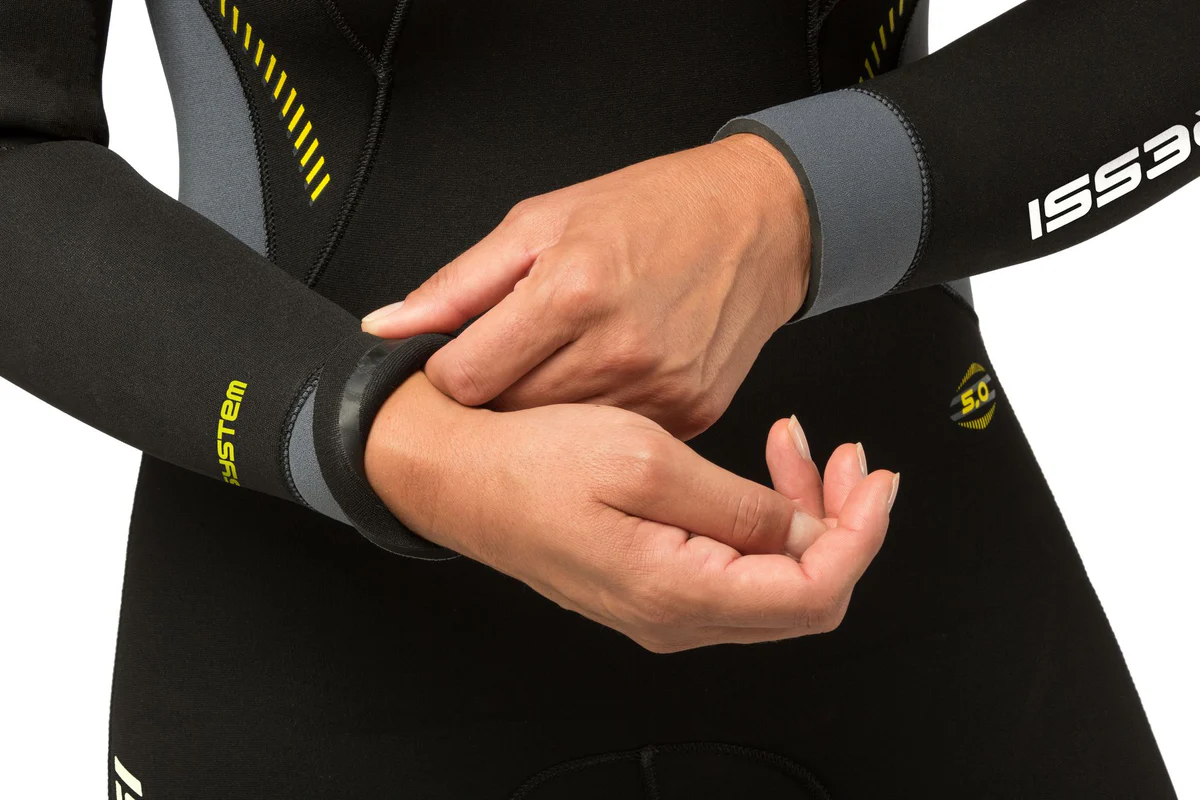From the perspective of Valters Preimanis, founder of Daivings, a diving center committed to fostering safe and skilled divers, the predive safety check is not merely a procedural formality; it is a sacred ritual that underpins every successful and incident-free dive. As an instructor who has witnessed countless dives, both seamless and those marred by preventable issues, I cannot stress enough the profound importance of this often-underestimated step. Regardless of your experience, the familiarity with your gear, or the number of times you’ve shared a dive with your buddy, a thorough predive safety check is the cornerstone of dive safety.
It’s disheartening to observe how often certified divers, despite having meticulously learned these checks during their training, become complacent. The allure of the water, the excitement of the upcoming dive, or perhaps an ingrained sense of overconfidence can lead to shortcuts. Yet, it’s precisely these oversights—a forgotten piece of equipment, a subtle gear malfunction, or a miscommunication with a buddy—that frequently escalate into more serious problems underwater. At Daivings, we instill in our students and remind our seasoned divers that the predive safety check is the easiest and most effective proactive measure against these common pitfalls.
While various mnemonics exist to aid recall, from the widely recognized BWRAF (“BCD, Weights, Releases, Air, and Final check”) to others like SEA BAG or ABC, the core principle remains the same: systematicity and consistency are paramount. It’s not about rote memorization; it’s about ingrained habit and a deep understanding of why each step is critical. Let’s delve into the technical nuances of each element, emphasizing the critical points that often get overlooked.
BCD: Your Buoyancy Guardian
The Buoyancy Compensator Device (BCD) is your primary tool for managing buoyancy, making its flawless operation non-negotiable.
- Low-Pressure Inflator (LPI) Connection: This seemingly simple connection is often taken for granted. A loose LPI hose can lead to a sudden, uncontrolled loss of inflation capability, turning a comfortable dive into a potential emergency. Always ensure it’s snugly and securely fastened.
- Inflation/Deflation Mechanisms: Test both the power-inflate and oral-inflate functions. Sticky buttons can lead to uncontrolled ascents or descents. The oral inflate is your crucial backup in case of LPI failure, so its smooth operation is vital.
- Dump Valves: Each dump valve—shoulder, lower, and often integrated with the LPI—must be pulled to verify its free movement and ensure it doesn’t stick open. A stuck-open dump valve can cause a rapid, uncontrolled descent. Pay particular attention to the shoulder dump valve toggle: I’ve personally witnessed instances where it was inadvertently tucked under a strap, leading to an accidental and dangerous air release by the diver.
- Tank Band Security: A loose tank band is a recipe for disaster. The cylinder must be rock-solid in its mount. Give it a firm wiggle test. Any play indicates a potential issue.
- Buddy BCD Familiarity: This cannot be overemphasized. In an emergency, your buddy is your first responder. Understanding the inflation and deflation mechanisms of their specific BCD could be the difference between a swift resolution and a struggling situation.
Weights: The Foundation of Control
Proper weighting is fundamental for controlled ascents, descents, and maintaining neutral buoyancy. Beyond simply having enough weight, it’s about accessibility and release mechanisms.
- Weight Configuration Communication: You and your buddy must know each other’s weight systems inside and out. Whether it’s a traditional belt, integrated pockets, trim pockets, or ankle weights, demonstrate their location and release mechanism.
- Security of Integrated Pockets: For integrated weight systems, a gentle but firm tug on the pockets confirms they are securely fastened and won’t inadvertently fall out during the dive. Losing weights unexpectedly can lead to uncontrolled ascents, a significant safety hazard.
- Presence of Weights: It sounds simplistic, but in the rush of predive preparations, divers have been known to enter the water without their weights. A quick visual and tactile check is essential.
Releases: The Emergency Escape Route
This step is, in my professional opinion, the most critical aspect of the predive safety check in terms of emergency preparedness. The ability to swiftly and effectively release your buddy’s equipment, or for them to release yours, can be life-saving.
- Buddy System Review: Even if you’ve dived with the same buddy for years, review their setup. Manufacturers update designs, and divers acquire new gear. Familiarity breeds confidence, but repetition reinforces critical knowledge.
- Weight Release Demonstration: Crucially, demonstrate the specific method for releasing your weights. This varies significantly between systems:
- Clips/Buckles: Simple to operate, but ensure they are not seized by corrosion.
- Rip Cords: Ensure the cord is easily accessible and the mechanism functions smoothly.
- Gravity Release Pouches: Confirm they slide out without excessive force.
- Fabric Fasteners (Velcro): Verify they release with a firm pull.
- BCD Harness Releases: Systematically show and confirm the operation of all harness release points: shoulder straps, chest strap, and cummerbund. These are the primary points of detachment in a rapid emergency.
- Accessory Release Points: Beyond the BCD, discuss and confirm the location and release methods for essential accessories:
- Octopus/Alternate Air Source: Must be easily identifiable and deployable.
- Gauges (SPG, Depth Gauge, Compass): While not typically “released,” ensure they are streamlined and not dangling to avoid entanglement.
- Drysuit Hoses: If applicable, know how to disconnect them.
Air: Your Lifeline’s Integrity
The air supply is your very breath underwater. Any compromise here is an immediate threat to life. This step demands meticulous attention.
- Cylinder Valve Fully Open: This is a surprisingly common oversight. Many divers will initially turn on their air, check their SPG, then inadvertently turn the valve off without purging their hoses. A pressurized hose will falsely indicate a full tank.
- The “Quarter-Turn Closed” Myth: Modern cylinder valves are robust. The outdated practice of turning the handwheel a quarter-turn closed is no longer recommended by most training agencies due to significant fatalities. It creates confusion, particularly for novice divers, about the correct direction to turn the valve. Always fully open your cylinder valve.
- Breathing from Both Regulators: This is non-negotiable and provides multiple critical checks:
- Primary Regulator Function: Confirm that it breathes easily and smoothly. This is especially important with rental gear.
- Octopus/Alternate Air Source Function: Test its operation. This secondary regulator is your or your buddy’s lifeline in an out-of-air scenario.
- Diaphragm/Lever Check: By breathing, you are ensuring the regulator responds to the subtle pressure changes of your breath, not just the manual purge button. This confirms the internal mechanics are functioning correctly.
- Air Quality Check: This is a crucial, yet often skipped, step. Inhale deeply from each regulator and taste the air. Any oily taste, peculiar smell (like gas fumes), or unusual odor indicates contaminated air. If you suspect bad air, alert dive staff immediately and absolutely DO NOT use that cylinder.
- The “Exhale First” Protocol: Before taking your first breath from the regulator, exhale forcefully into it. This simple action helps expel any debris, dust, or even small critters that might have found their way inside the regulator, preventing them from entering your mouth.
- SPG Monitoring During Breaths: This is the ultimate confirmation of your air supply. After fully opening the valve, take a few deep breaths from your primary regulator while intently watching your Submersible Pressure Gauge (SPG):
- Steady Needle: If your air is fully on, the needle will remain steady with each breath.
- Dramatic Drop: If your air is off, but pressure is trapped in the hoses, the needle will plummet dramatically with each breath as that residual air is consumed.
- Bouncing Needle: If your air is only partially on, the needle will bounce down and back up with each breath, indicating a restricted flow.
Final Check: The Comprehensive Sweep
This is the last opportunity to catch any forgotten items or unstreamlined gear before entering the water.
- Essential Equipment: Systematically go through your personal checklist: mask, snorkel, fins, signaling devices (DSMB, whistle), cutting tool, and any camera equipment.
- Streamlining: Dangling hoses, unsecured gauges, or loose accessories are not only a nuisance but a significant entanglement hazard. Use hose clips, bungee cords, or integrated systems to keep everything close to your body and out of the way.
- Dive Computer Settings: If your computer is air-integrated, confirm it is correctly paired with your cylinder. Also, double-check the gas mixture setting (e.g., air, Nitrox %); incorrect settings can lead to inaccurate decompression calculations and potential dive injuries.
- Mask Preparation: Defog your mask just before entry. A fogged mask is a frustrating distraction that can compromise safety.
- Head-to-Toe Buddy Check: After your self-check, have your buddy perform a final head-to-toe visual inspection of your setup, and you do the same for them. A fresh set of eyes can often spot what you’ve missed.
In conclusion, as Valters Preimanis and the team at Daivings steadfastly advocate, complacency is the silent killer in diving. Skipping or rushing the predive safety check is an entirely preventable factor in countless dive accidents. Embrace this ritual, perform it meticulously before every single dive, and consider it an indispensable part of your preparation. Your safety, and that of your buddy, depends on it.

